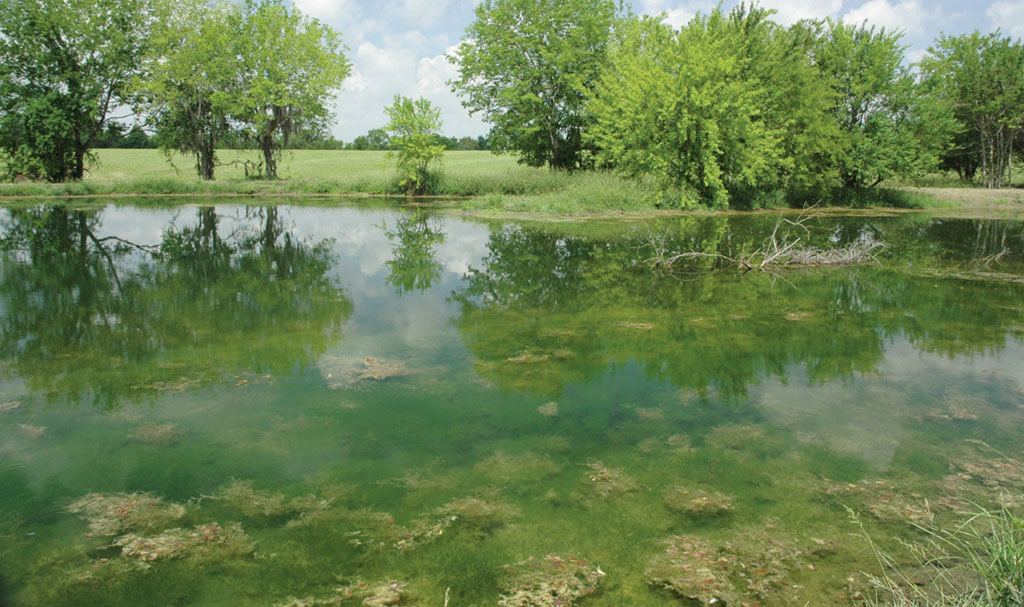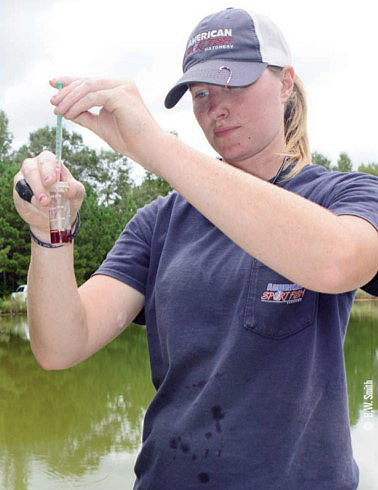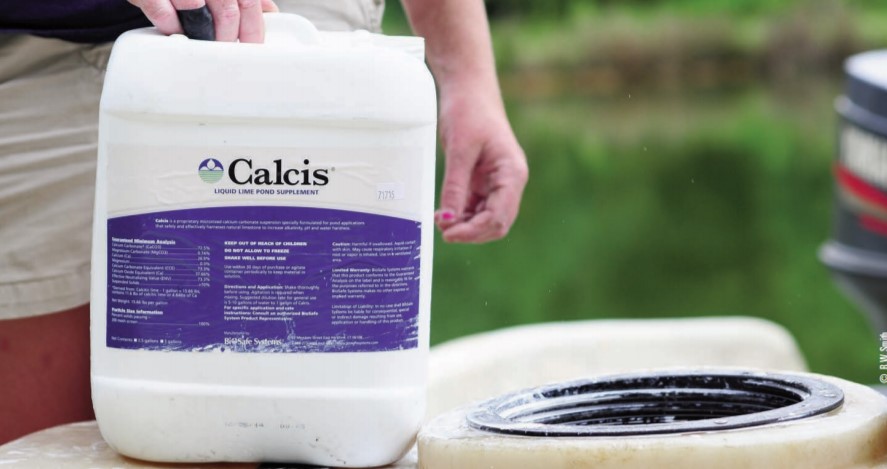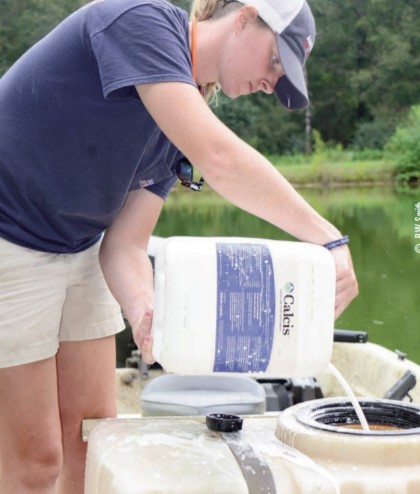Barry W. Smith | Originally published in GameKeepers: Farming for Wildlife Magazine. To subscribe, click here.

Those of us who have small ponds are just as concerned about the management and health of our fish pond owners with larger bodies of water. Although there are many concerns, water quality is one of the most important issues relating to the health and production of game fish. It would seem that the smaller the pond, the easier the water quality could be controlled, but we are often too small for more traditional methods of adjusting water quality, such as applying agricultural limestone.

Fish, checks a water sample for alkalinity. Pond water
with values of less than 20 ppm will benefit from an
application of lime.
Pond or lake “liming” typically refers to the application of four to five tons per surface acre of agricultural limestone. Traditionally this management activity utilizes a large front-end loader or telehandler to load bulk limestone onto a heavy duty barge. The ground limestone is then washed off the barge using a high pressure water pump to evenly cover the pond bottom. This technique neutralizes the acidity of the pond bottom and adds buffering capacity to the water, allowing the planktonic algae to uptake pond fertilizer and increase food supply for fish. This technique is often not practical or economical for small ponds.
Tom Warmuth, Aquatics Technical Representative of BioSafe Systems, indicates that his company offers a liquid lime, Calcis, which is a highly concentrated calcium carbonate flowable suspension of consistent 1 micron size particles. “This uniform size,'' says Warmouth, “increases the surface area of the material and allows for faster water quality adjustment not only in the water column, but also in the bottom soils of the pond. Calcis is easy to apply and settles out quickly with no “ultra-fines” to stay suspended in the water column and make your water cloudy. The ease of application is great, as it can be sprayed as a water suspension from a gas-powered agricultural sprayer or pumped from a large tank as slurry.”
Wade Bales, fisheries biologist and owner of Quality Lakes in South Carolina has used Calcis and is very pleased with the results. “We do traditional liming from a barge using agricultural limestone. It is important for us to cover as much of the pond bottom with limestone as we can, however, in a lake we did this year, several of the coves contained so much standing timber we could not access these areas with our barge. We used a small skiff and applied Calcis to these areas with great success. It will also allow us to lime many of the small ponds we manage that are too small to consider using our big liming barge. This product appears to have lots of applications for our pond management work.”
Robby Mays of American Sport Fish in Montgomery, Ala. says, “We do a lot of traditional liming using one or several of the special liming barges we operate. It takes a lot of labor to lime most of the lakes we service, starting with a trip to the lake to locate suitable areas to dump 18- wheeler loads of limestone. Then we have to coordinate with the lime pits and trucking companies before we move our barges and loading equipment on site. For small ponds the 25-ton loads are more than we would need, that is where this liquid lime would make application so easy. One of our management biologists, Ginger, treated a ¾-acre pond using a small skiff and an agricultural sprayer in less than two hours. That was easy, efficient and labor-saving. We see similar uses for Calcis in the near future.”

Efforts to lime small ponds in years past have been limited and mostly inefficient. Attempts have been made by pond owners to dump quantities of agricultural limestone at the upper end of ponds where water would enter the pond after heavy rain events. According to Dr. Claude Boyd, water quality Guru at Auburn University’s School of Fisheries, “Agricultural limestone is not very mobile in water and most of the limestone will remain where it is deposited in the pond. This is not an effective substitute for spreading the limestone over the entire pond bottom.”

a water to product ratio of 10:1 to keep the lime in suspension.
Through the years we have seen many ineffective techniques of attempting to lime a small pond. One of the techniques that worked better than most was tying two 14-ft flat bottom boats together and attaching a sheet of 4 X 8 plywood across the bow as a platform to hold bags of limestone. One person would empty the bags on the plywood and then shovel it into the pond as another person would guide the boats in a pattern that would cover the entire pond bottom. Just thinking of loading all those bags and shoveling several tons of limestone makes my back hurt! Liming small ponds is worth the trouble and cost to improve growth and health of your fish and increase fish food production in your pond.
Liming large fields for row crops or liming small fields for deer food plots are effective and in some cases necessary to elevate soil pH so that plants can absorb nutrients from the fertilizer. The phytoplankton in your pond functions in a similar manner, acid soils and low alkalinity makes attempts at pond fertilization ineffective. Contact a fisheries biologist to help create proper water quality in your lake; you and your fish will be glad you did.































